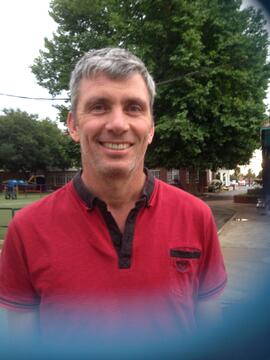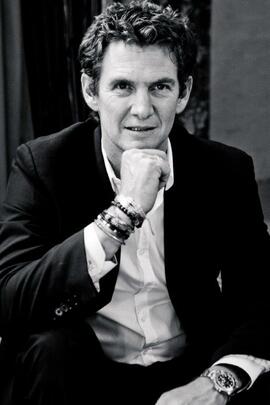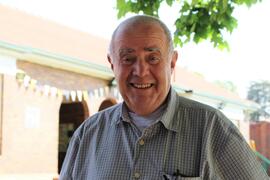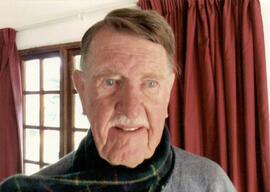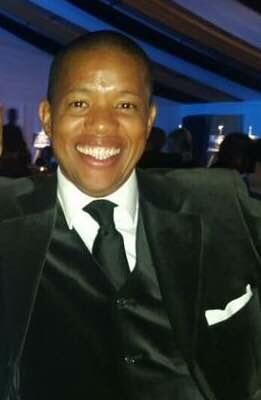Interview with Louis Cabri – 1951
Louis came to St David’s in 1950 a few months after having emigrated from the USA. The principal was Br
Edwin and the class master was Br Werner who also taught tennis. Because he had studied a different
school curriculum he was absolved from taking Afrikaans and Latin and took Biology via correspondence
through Unisa instead and French with private lessons.
He remembers being told by one of the brothers that he wouldn’t pass but that only spurred him on to
succeed. He found the hardest class to adapt to was History as he had first attended a British preparatory
school, as it happens the same as Andrew Freyman, then 3 years high school in New York. This was not
only because completely different aspects of History were taught eg. early British History under the
Romans followed by the US explorers of the west and the American Revolution to the Kaffir wars, but
because of the different cultural contexts, as for example he had never heard before of the Kaffir wars or of
the Boers.
Louis went onto Wits University taking a BSc in Geology and Chemistry in 1954 and then a first class
Honours in Geology in 1955. After geological field work in several Africa countries he began his graduate
studies at McGill University (Montreal) in 1959 where he received several scholarships. He also received
some professional awards and is working for himself as a consulting mineralogist at Cabri Consulting, in
Ottawa Canada.
Louis remembers some of his classmates – Peter Kaye who took accounting, Peter Rosmarin took a
BCom, Al Zylstra did engineering – civil?, Mike Clarke, BA and became a school teacher in Natal, Carl
Vermeulen became a lawyer, Roland Berger took engineering – mechanical?, Andrew Freymnan took
mining and engineering, eventually getting an MSC at McGill and a PHD is now living in Toronto, Angelo
Lasich took Medicine, Cedric Evans a BA eventually went to graduate school and ended up teaching
college or university in USA, Denis Richardson too accounting.
In the photo of his graduating Matric class Peter Rosmarin is erroneously listed as being in the back row
and Louis as being in the front row making matters worse Louis’s initial is given as A not L and P. Berger
should be R Berger.
JLE May 2013
Louis J. Cabri class of 1951
Louis arrived at St. David’s as a day student for the 1951 Matric year, after spending a couple
months in 1950 at Marist Brothers (Observatory), while the family lived in the Rosebank Hotel.
They had immigrated from the USA, arriving by ship in Cape Town in August 1950, and prior to
buying a house on West Street, Sandown, then a dirt road leading to some fields and a local
butcher. The Balalaika was near the intersection of West Street and Rivonia Road.
This was Louis’ third school in three countries with very different pedagogies and cultural
backgrounds. He began school at the Gezira Preparatory School in Zamalek (Cairo), a nondenominational
private school for boys and girls run by an English couple using a British
curriculum. He remembers the war years when there were exciting (to him) air raids with
everyone filing down the stairs to a basement shelter and then exploring outside for shrapnel in
the early morning. Also meeting many Commonwealth officers (many from SA) that his parents
entertained or in the park who would give souvenir badges and so on. Things were very tense
until the British beat back Rommel’s army at El Alamein (Oct-Nov 1942). He was a sickly child
(asthma) and often missed school so did not excel at sports (soccer and cricket) but he did box
and won the school’s boxing trophy in 1946 as a featherweight.
The family left Egypt in July 1946 as the political instability made things unpredictable, first
going to Rio de Janeiro and then at the end of December 1946 arriving by air in New York.
Since it was mid-year for school Louis briefly attended the last grade before high school at a
catholic school in Brooklyn run by brothers. He then started high school in September 1947
(Scarsdale), a non-denomination co-ed public school. The curriculum was also very different to
the British system, notably American history and culture, and the sports were different
(basketball, American football, and baseball); only sport he could play was softball, an easier
form of baseball. Thus after completing three years of high school the family left again, this time
for South Africa.
Louis began the 1951 school year at St. David’s, which was such a contrast to the co-ed
American high school in many ways. First, because he was going to be there only a year he
was allowed to take French instead of Afrikaans and Biology instead of Latin. Though they
spoke French at home, Louis needed to take weekly private French lessons downtown (Mme.
Mingeau) and biology via a correspondence course from the University of South Africa. The
only teaching brothers Louis recalls were the principal (Brother Edwin) who had a stiff neck or
something that made him hold his head at a bit of an angle and Brother Werner. He does not
recall being caned, probably because being a day student he did not have the same
opportunities to be naughty. One of the brothers (maybe brother Edwin) told Louis sometime
during that year that he would fail the matric, which is maybe why he ended up with a first class
(four A’s and 3 B’s). Louis remembers that the matric exams were held in a “temporary” long
(and hot) wooden hut, probably dating from the war, where the boys sat in long rows separated
by girls from other schools so that they could not be seated next to school friends. The most
memorable exam was the one when the girl in front of Louis (from Red Hill) fainted and was
taken away – we thought because she did not want to take the exam. Louis’ most difficult
subject was history because he had never even heard of South Africa, and of course made
2
more difficult as he did not have the cultural background to help understand and recall names
and events.
Swimming, rugby, athletics, and cricket were important sports at the school but Louis was not
good at any of these. Brother Werner taught tennis after school, which was new to Louis, but
which he enjoyed playing for many decades (with squash) until his knee gave out in his late 60s.
However, there was also boxing, and Louis’ ego was so large that he thought he could take on
anyone. One Saturday, with no preparation or training, he went into the ring against a younger
but well-built strong boy, who gave him a thrashing and nearly knocked him out. The walk back
home was slow and painful with ringing ears, and that was end of boxing! Louis made many
friends there in that short period and append the class photograph from the Maristonian, but
with the legend corrected as there were numerous errors. Prefects were Peter Kaye, Peter
Rosmarin, Alf Zylstra, Mike Clarke, and Carl Vermuelen, all of which became school and
university friends and invited to our house. Louis also had as friends Denis Richardson, Andrew
Freyman, Cedric Evans, and Roland Berger, but he remembers the others. As Louis recalls,
Carl and Mike were champion swimmers and Peter Rosmarin and Alf were outstanding
cricketers; Alf, also having a very low golf handicap.
After St. David’s Louis went to Wits where he took a B.Sc. (geology & chemistry) followed by a
B.Sc. Hons (geology). Following Wits Louis worked as an exploration geologist is the Gold
Coast (Ghana), Sierra Leone, and the north-west Cape, before getting married to Mimi De
Meillon in 1959 and leaving for graduate school at McGill University in Montreal. After studying
for M.Sc. (Appld) and Ph.D. degrees, while working summers as a geologist in northern Ontario
and Quebec, Louis took a research position in 1964 with the federal government in Ottawa,
retiring in 1999 as principal scientist. Louis and Mimi raised three children in Ottawa: one a
university professor, one a ballet dancer and choreographer and one an artist who now has a
little restaurant in Paris (France). They have two grandchildren. Upon retirement, Louis
immediately opened a consulting business, specializing in precious and base metal mineralogy
and metallurgy, with clients world-wide. His incorporated business is still active, but he
considers himself semi-retired and hopes to hear from his former St. David’s school chums.
Ottawa,
2017-12-06





